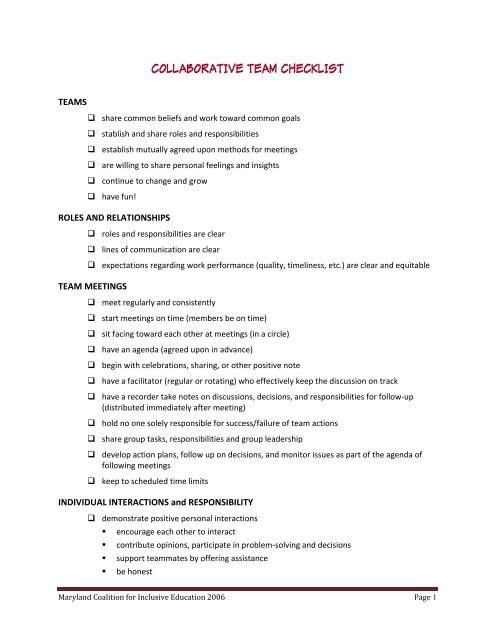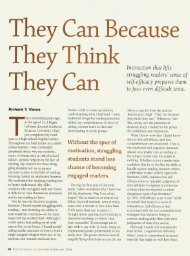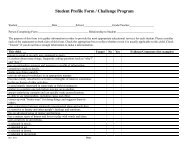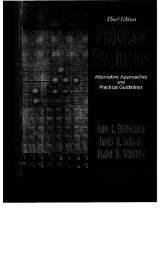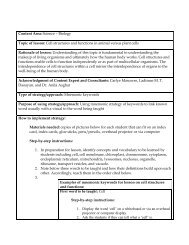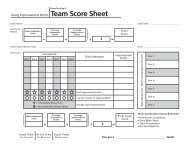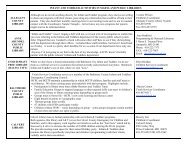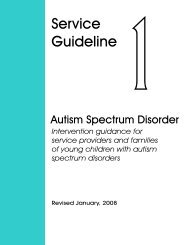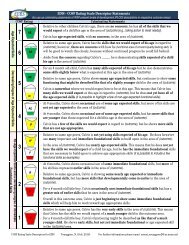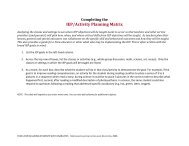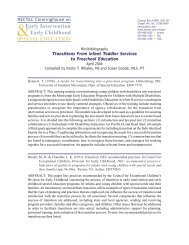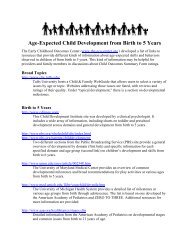COLLABORATIVE TEAM CHECKLIST
COLLABORATIVE TEAM CHECKLIST
COLLABORATIVE TEAM CHECKLIST
You also want an ePaper? Increase the reach of your titles
YUMPU automatically turns print PDFs into web optimized ePapers that Google loves.
<strong>COLLABORATIVE</strong> <strong>TEAM</strong> <strong>CHECKLIST</strong><strong>TEAM</strong>S share common beliefs and work toward common goals stablish and share roles and responsibilities establish mutually agreed upon methods for meetings are willing to share personal feelings and insights continue to change and grow have fun!ROLES AND RELATIONSHIPS roles and responsibilities are clear lines of communication are clear expectations regarding work performance (quality, timeliness, etc.) are clear and equitable<strong>TEAM</strong> MEETINGS meet regularly and consistently start meetings on time (members be on time) sit facing toward each other at meetings (in a circle) have an agenda (agreed upon in advance) begin with celebrations, sharing, or other positive note have a facilitator (regular or rotating) who effectively keep the discussion on track have a recorder take notes on discussions, decisions, and responsibilities for follow‐up(distributed immediately after meeting) hold no one solely responsible for success/failure of team actions share group tasks, responsibilities and group leadership develop action plans, follow up on decisions, and monitor issues as part of the agenda offollowing meetings keep to scheduled time limitsINDIVIDUAL INTERACTIONS and RESPONSIBILITY demonstrate positive personal interactions• encourage each other to interact• contribute opinions, participate in problem‐solving and decisions• support teammates by offering assistance• be honestMaryland Coalition for Inclusive Education 2006 Page 1
• openly communicate (and agree to disagree at times)• demonstrate respect through facial expression, body posture and tone of voice engage in active listening• give eye contact to the speaker• don’t interrupt the speaker• ask questions related to the discussion and when necessary, repeat or paraphrase thespeaker to ensure understanding make decisions by consensus• poll each other for understanding and clarification of issues/ideas• be flexible when necessary and compromise to reach agreement on next steps• share decision making credit and blame (use “we” and “us” vs. “I” and “you”) set rules for methods to deal with controversial issues or subjects complete assignments outside of meetings generate lots of potential solutions to an identified problem review how they are doing and give each other feedback on how they are doing as a teamCONFLICT RESOLUTION METHODS remain calm look at the speaker don’t interrupt the speaker don’t adopt a defensive posture listen to what is being said accept criticism of ideas without being defensive criticize ideas and not people don’t talk about others behind their back check the accuracy of the message (don’t assume) validate the other person’s feelings try to imagine the other person’s point of view use a tone of voice which is calming avoid tones which suggest impatience, disgust, or sarcasm speak clearly and slowly at a moderate volume attempt to reach agreement on a mutual goal and next steps plan to return to the issue with ground rules or with an agreed‐upon agenda.Maryland Coalition for Inclusive Education Page 2


